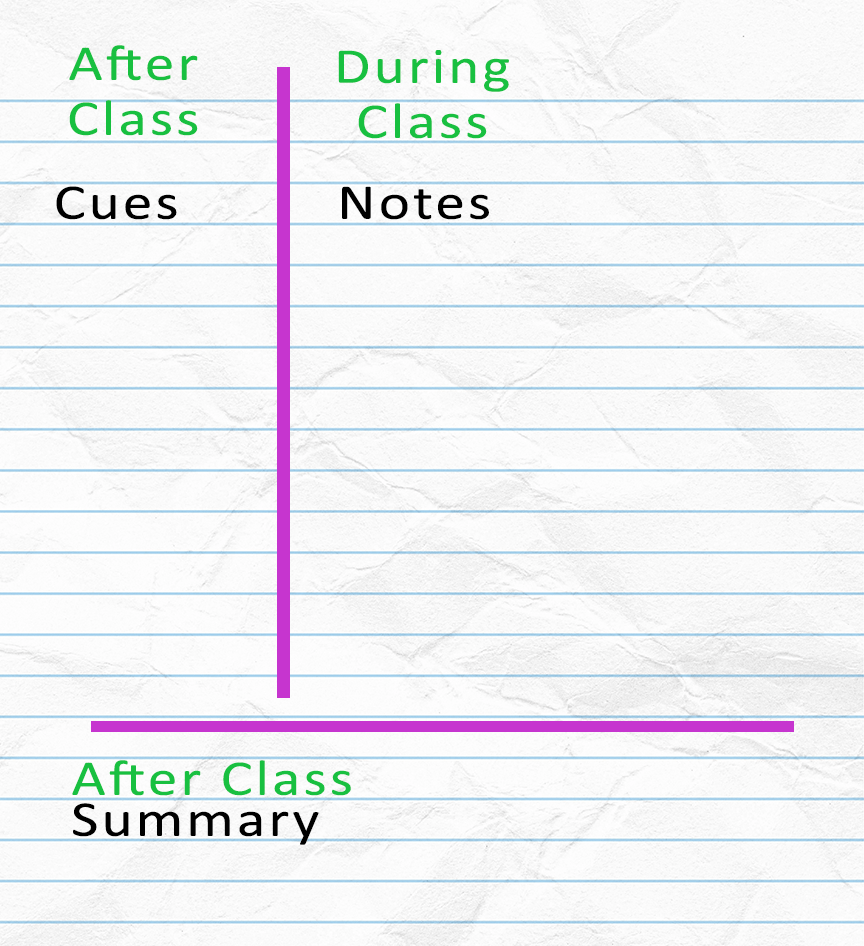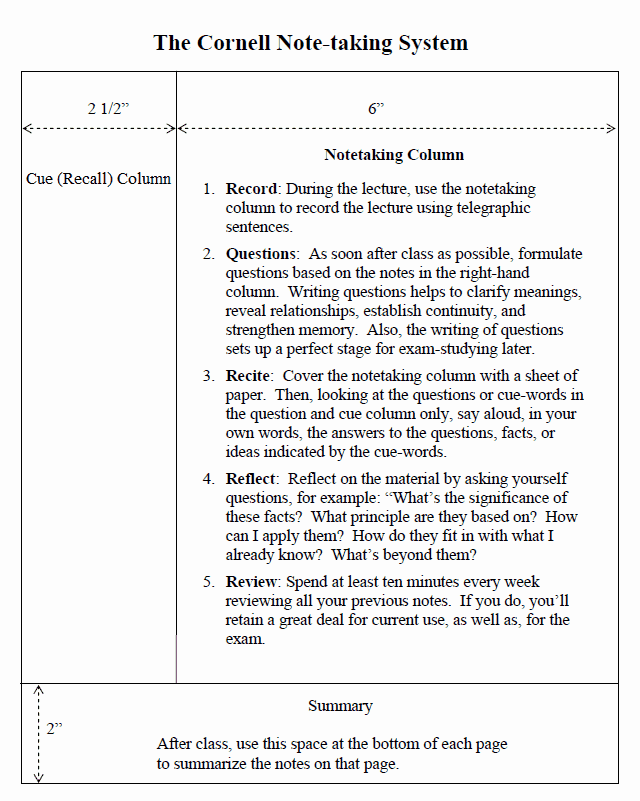The Cornell note-taking system is a “Do-it-right-in-the-first-place” study tool developed by Professor Walter Pauk of Cornell University during the 1950s.
It is designed to save time while enabling students to maximize note-taking effectiveness. There is no rewriting, revising, or retyping of your notes.
It remains a useful strategy for students who want to create their own study guide and useful reference system within their notes. The system consists of the following steps:
Step 1 – Divide your paper into two columns
Use a large loose-leaf notebook for your note-taking. Only use one side of each leaf of paper in the notebook (this will enable you to lay your notes out to see the direction of a lecture.)
Draw a vertical line 2 ½ inches from the left side of your paper. This is the recall column of your notes. All your lecture notes will be taken to the right of this margin.
Later, keywords or phrases can be written in the recall (left) column.
Similarly, leave the bottom 2” inches for the summary section.

Step 2 – Take notes in the note-taking column
During the lecture, record notes in paragraph form in the note-taking column to the right. Capture general ideas and concepts, not illustrative ideas. Use short, telegraphic sentences as much as possible.
For example, “In the presence of sunlight, plants convert carbon dioxide and water into glucose and oxygen using a process known as photosynthesis” can be written as “Photosynthesis: plants in sunlight convert CO2, water into glucose and O2.”
Skip lines to show the end of ideas or thoughts. Using abbreviations will save time. Write as legibly as possible.
Note down relevant questions and keywords in the recall/cues (left) column to assist with future reviews of your notes.
Step 3 – Review your notes within 24 hours
Research shows that 10 minutes of review for every lecture hour, done within 24 hours of class, dramatically improves recall.
After each lecture, read through your notes. Make them more legible if necessary. Formulate questions/summaries based on the notes in the right-hand column. This helps clarify meanings, reveal relationships, establish continuity, and strengthen memory.
Use the summary section for this. (REDUCE) Reread the lecturer’s ideas, reflect on them, and put them into your own words.
Cover the note-taking column (Right) with a sheet of paper and recite the general ideas and concepts of the lecture from memory. Overlap your notes, showing only the cues column, and use this for your review.


